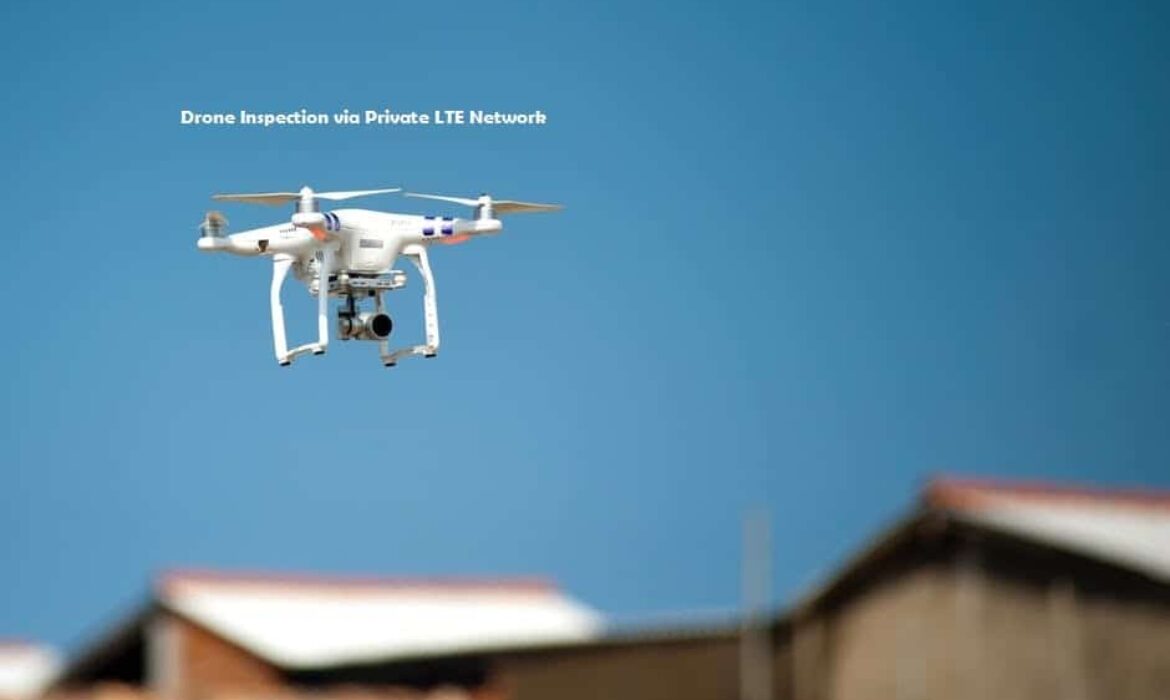In Feb 2017, Qualcomm along with GE and Nokia announced a successful demonstration of private LTE for industrial IoT market which created a great buzz in the industrial IT circles. This team has conducted live field trails to continue the research based on this demonstration throughout 2017 by integrating their platforms and technologies. While Nokia provided the base infrastructure and the Nokia Digital Automation Cloud Service for a private network, Qualcomm offered the wireless connectivity with chipset devices and GE integrated these solutions onto its Industrial IoT platform Predix for a better control of industrial resources across the infrastructure. GE leverages the Predix platform with a private LTE network setup at GE headquarters. This demonstration brings private LTE networks into the limelight.
An Overview of LTE Networks
Long Term Evolution (LTE) is an innovative high-speed wireless network technology that comes with low latency and high speeds over long distances for data terminals and mobile devices via UMTS technologies. It was designed by 3rd Generation Partnership Program (3GPP) as a 4G network communications standard to offer higher speeds for wireless networks; ten times faster than 3G networks. With IP-based voice, data and multimedia streams, LTE networks offer speeds between 10 Mbit per second and 1 Gbit per second and is easy to deploy and use. They can be deployed on different frequency bandwidth blocks. The current LTE networks support 1.4MHz, 3MHz, 5MHz, 10 MHz, 15MHz, and 20MHz. every 5MHz spectrum of each cell support around 200 active connections.
How does it work?
LTE uses two different air interfaces for downlink and uplink purposes. For the downlink from the tower to the device, LTE uses Orthogonal Frequency Division Multiple Access (OFDMA) air interface which allows multiple connections on a single cell and increased throughput of a connection. Similarly, for the uplink from the device to the tower, LTE uses Discrete Fourier Transform Spread Orthogonal Frequency Division Multiple Access (DFTS – OFDMA) air interface. With varying air interfaces for downlink and uplink, LTE networks optimize connections with better battery life for the devices.
LTE for Industrial IoT
LTE technology is not new but it gained momentum with the advent of the Internet of Things (IoT). While the cloud computing revolutionized the IT world and centralized resources, it paved a way for BYOD networks wherein mobile devices entered the network. The next big step was Internet of Things wherein sensors and other industrial devices joined the IT networks. With IoT, organizations are able to facilitate communication between a range of devices including IT and non-IT devices.
The main challenge for Industrial IoT is connectivity issues. More often, industrial companies have their temporary facilities located in remote places wherein reliable network connection is not easy to obtain. Whether it is an oil excavation site, mining site or a power plant, the regular network might provide basic connectivity but not the required speed and efficacy. As industrial infrastructure is now equipped with robotics, automated guided vehicle (AGV), drones, Augmented reality and virtual reality (AR/VR), high-speed and low latency data transfer becomes a critical requirement. The data should be stored locally while having a global access. Services should be interoperable. This is where LTE networks come to the rescue. The temporary industrial sites can set up a standalone LTE network and enjoy reliable and faster network connectivity for that facility.
The state of LTE Networks
Today, every cellular mobile device supports 4G LTE network. While AT&T and Verizon launched 4G LTE networks, others are quickly following them. According to ReportsandReports, the global investments in LTE networks accounted for $800 million in 2016. This value is expected to grow at a CAGR of 32% between 2016 and 2020. Persistence Market Research envisages that the global LTE networks market value would reach $926.1 billion by 2024, growing at a CAGR of 13.1% between 2016 and 2024. Similarly, Harbor Research reports that the private LTE network would reach $17 billion by 2022.
Public LTE Vs Private LTE
Enterprises can either choose public or private LTE networks. When it comes to a public LTE offering, the network is managed by the service provider. While it gives wide-area coverage, it is also shared by other customers. Public LTE networks provide general voice and data services.
Private LTE networks bring additional benefits to the table. Firstly, private LTE networks come with dedicated equipment and are managed locally, giving better control over data. Moreover, there are no sudden traffic surges. With the consistent performance, industrial facilities can manage productivity at predictable levels. Secondly, private LTE networks are easy to deploy and use for dedicated as well as virtual resource-based infrastructure. Thirdly, private LTE networks offer dedicated service which means high-quality service is guaranteed along with the ability to customize the network to suit industrial-specific needs.
Benefits of Private LTE Networks
- Support multiple devices with higher bandwidth
- Customizable for features such as mobile settings and quality of service
- Highly secure
- Better control over data
- Future proof as you can leverage the LTE roadmap
- Superior coverage for indoors and outdoors
- Seamless mobility
- Interoperability between suppliers
Private LTE Networks take the Industrial IoT to a new horizon
As the IoT networks increased, the need for higher speed and coverage, full mobility, latency and quality of service became a critical requirement for industrial facilities such as airports, ports, container ports, warehouses etc. Qualcomm has partnered with GE and Nokia to create a unified communication network system. The result is the first Private LTE-based network for industrial IoT. By integrating all the devices in the network and bringing them onto an industrial OS Predix platform, organizations are now able to incorporate latest technologies such as machine learning, analytics, artificial intelligence and predictive maintenance to significantly improve the efficiency of business processes and services. Nokia takes the automation to a new level by offering a private plug n play LTE ecosystem. The wireless communication is managed by Qualcomm. Multefire is an LTE deployment initiated by Qualcomm and Nokia. It is now managed by Multefire Alliance that was formed in December 2015. Similarly, Federal Communications Commission (FCC) in the US has defined Citizen Broadband Radio Service (CBRS) that offers 150 MHz shared spectrum band in 5.5 GHz band. So, organizations have two solutions to cost-effectively own and manage their private LTE networks without purchasing spectrum licenses.
As private LTE networks bring low latency and high-speed wireless connectivity, industries can add more sensors, analytics and automation devices to efficiently manage business-critical procedures such as handheld computing, AGV, head mounted display, industrial robots, edge computing and analytics, interactive maintenance, environmental sensors, drone inspection, turbine and blade sensors etc..
Private LTE Use cases
Manufacturing Vertical
In manufacturing industries, welding robots are commonly used for welding and handling automobile parts on the assembly line. Synchronization between a robot and the assembly line sensor is critical for precision of a process. A small delay in communication will result in the collision between the robots that in turn collapses the entire assembly line processes. For this reason, many industries are running hard-wired connections that are expensive. Moreover, wired connections occupy more footprint and clog the area as well. With private LTE networks, organizations can operate with wireless robots and thereby save time, money and footprint.
Mining Vertical
In a mining location, people have to work in harsh and remote environments. While sophisticated and automated solutions are available, organizations cannot use them owing to the lack of proper communication systems for real-time data for remote vehicles, systems, and the monitoring center. With a private LTE network, organizations can replace regular vehicles with driverless vehicles so that they can quickly reach out to remote areas and precisely apply drill blast procedures. The mining operations can be efficiently monitored from a centralized dashboard.
Healthcare Vertical
Healthcare is one of the important verticals that hosts a large number of IoT devices ranging from scanners and X-Rays to clinical and biometric devices. However, healthcare organizations use Wi-Fi only because they are not able to choose one mobile service provider’s ratio for all devices. Obtaining FDA certification for all clinical devices is cumbersome. However, the CBRS LTE networks now allow organizations to choose a spectrum that is independent of a mobile service provider. Moreover, one FDA certification would work for any private LTE spectrum.






